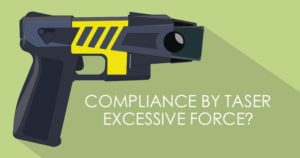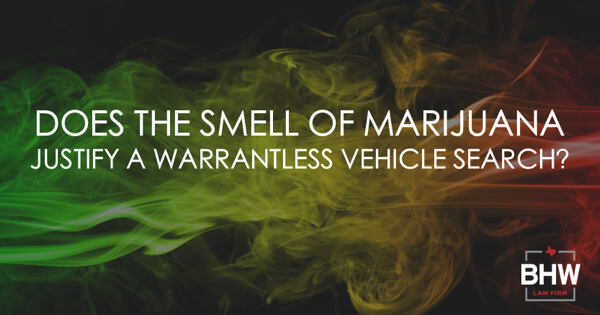
The Texas Court of Criminal Appeals recently heard a case involving excessive force by police.
In, Hereford v. State the ultimate issue presented to the CCA was whether forced used by officers to recover drugs from a defendant was excessive and unreasonable. The court held that it was.
The appellant in Hereford pulled into a parking lot and got out of his car. An officer observed him and recognized him as someone he had dealt with in the past. The officer knew Hereford had outstanding warrants. The officer conducted a pat down search and arrested him for the warrants. After appellant was arrested, the officer searched his vehicle. When the officer did not find any narcotics, he called a K9 unit whose dog alerted on the car. Despite the alert, officers again failed to find any narcotics. When the officer returned to his patrol unit, appellant had his head down and was chewing on something. The officer commanded appellant to spit it out but he refused. The officer and two others then removed appellant from the patrol unit and tased him on the leg. The officer who made initial contact with appellant then grabbed him around the throat and tried to force him to spit out the substance. The officers then ceased trying to force the appellant to spit out the substance. After discussing their options for fifteen to twenty minutes, the officers decided to take the appellant to the hospital.
At the hospital, the officers appellant over to another officer working off-duty at the hospital. Appellant still had the substance in his mouth. The hospital tried to get him to release it by using ammonia capsules. This did not work. The off-duty officer then took appellant into an examining room and began to tase him repeatedly – three times in the upper inner thigh (the groin) and once in the right forearm. When he was being tased, appellant’s mouth would open involuntarily. While appellant’s mouth was open (during the tasing of his groin) the officer was able to get the substance out of his mouth. It turned out to be a plastic baggie of crack cocaine.
The issue presented for the CCA was whether, under the Fourth Amendment, the manner in which the evidence that was seized was reasonable. The court used the factors found in Winston v. Lee, 470 U.S. 753 (1985) to balance the intrusion to the appellant’s personal interests, the societal need for effective law enforcement, and the state’s need for evidence. Those factors include whether the police conduct:
- threatened the suspect’s health or safety;
- conformed to accepted medical practices;
- was performed by a trained professional;
- arose from the existence of probable cause to believe the suspect had evidence of a crime;
- unduly intruded upon the suspect’s dignity interests in personal privacy; and
- was a commonplace procedure to which individuals are often subjected.
Balancing those interests, the court found that the off-duty officer’s actions were unreasonable and violated appellant’s Fourth Amendment prohibition against unreasonable searches and seizures.
The CA, however, made it a point to highlight that this ruling was not to be construed to imply that the use of a Taser in these types of instances is per se unreasonable. The Court highlighted Ellis v. Columbus City Police Dep’t, No. 1:07CV123-A-A, 2009 U.S. Dist. LEXIS 95821 (N.D.Miss. September 15, 2009), where almost the same set of circumstances happened. In that case though, the suspect had lunged at officers and was openly chewing a plastic bag of cocaine. The Court differentiated that case from this one by explaining that in Ellis, the officers stopped after tasing appellant several times and the tasing occurred during the arrest (not long after and by another officer).
Presiding Judge Keller dissented without opinion.










